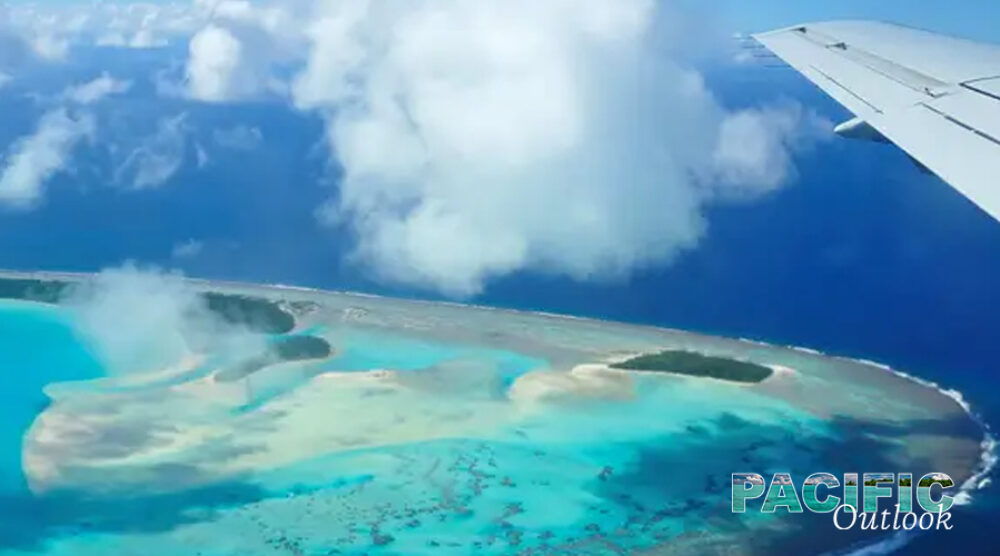In the Australian strategic consciousness the Pacific islands looms very large. There is more than two hundred years of history that includes seminal moments like the capture of German New Guinea in 1914, fighting the Imperial Japanese Forces in World War Two, decolonization and up past the 2003 Regional Assistance Mission to the Solomon Islands to recent Humanitarian Assistance and Disaster Relief operations. This historical legacy shapes Australian thinking but there is a new Pacific Island future steadily unfolding that is different in many respects to the celebrated past.
Three significant issues are disrupting contemporary Australian strategic thinking about the islands. The first is the entry of China as a new great power into the region. This has raised concerns in geographically distant Washington where American strategic thinking is actively considering new directions and defence postures. The Chinese challenge and the US response is though only the most obvious geopolitical change. Over the last decade, many other large and middle powers have unexpectedly become more interested in the Pacific Islands including Japan, the UK, Spain, Chile, India, South Korea and Russia. Geopolitics is now intruding into the islands.
The second issue is very different but again arises externally. Global warming and its implications are of grave concern across most Pacific Island communities with some seeing it as an existential threat. The Pacific Island nations themselves contribute a minuscule amount to global warming but they are noticeably impacted by it. The external states did not set out to weaponise greenhouse-gas emissions. Instead, they were merely striving for ever-larger national power. Global warming is just a by-product. Some Pacific Islands may become simply collateral damage in others’ quests for greatness, with China and the US the largest emitters.
The third issue is dissimilar in being internally driven. The Pacific Islands have reconceptionalised themselves. Rather than considering each other as small, widely separated island states adrift in a vast open ocean expanse they now see themselves as being large ocean nations. International legal developments, including the United Nations Convention on the Law of the Sea, have given many Pacific island countries very large exclusive economic zones. While their land area combined may only be about that of Spain, the Pacific Islands’ combined marine areas encompass some 30 million sq kms of ocean, approximately 28% of the world’s exclusive economic zones (EEZs). The Pacific Islands as a group have become an EEZ superpower, and these particular EEZs are resource rich.
A changed perspective amongst islanders has reinforced this notion of an imagined oceanic community. The Pacific Ocean is now “not what separates us but rather what joins us together as one ocean continent.” This is a somewhat startling vision of a large “Blue Pacific Continent” located in the mid-Pacific Ocean. Of equal consequence strategically, this feeling of an oceanic community is developing in parallel with an ever-growing sense of agency. If in the past, external powers dominated regional developments, now the future is one the islanders themselves seek to actively help create. They consider that if they act collectively, they can shape their tomorrows.
The three factors – the China challenge, global warming and a determined Pacific Island agency – create for Australia a new, challenging regional context. The world immediately beyond Australia’s eastern shores has changed and as importantly will change further.
The paper’s first half discusses the Pacific Island’s challenges and responses. This examination endeavours to stay at the strategic level by principally considering the various strategies the major participants are employing. The first chapter looks at the principal external challenges in Pacific Islands: geostrategic competition (Chinese and US strategies) and climate change. The second and third discusses the Pacific Islands’ and Australia’s strategies in response.
Having set the scene, the paper’s second half moves beyond the present, with the fourth chapter looking to 2040 to develop four, rather broad Pacific Island alternative futures. The future is always uncertain but in general terms lies within definable boundaries. The past and present shapes the future; it does not arise in some temporally independent manner.
The fifth and sixth chapters then use these futures to devise a range of possible strategic options in terms of both potential air power approaches and possible force structure changes. In this the paper focuses on national air power: the ability of a nation to achieve its objectives through the air domain and encompassing elements of civilian and military aviation.
The paper takes in a broad intellectual sweep. Air power has traditionally been conceived mainly in terms of warfighting and in particular applying mainly to major interstate conflict. This is not the world of the Pacific Islands. Instead of state security, the 2018 Boe Agreement signed by Australia and other Pacific Island Forum members placed human security at centre stage. Accordingly, the paper does not assume a future world at war in some rerun of World War Two although some future worlds considerably more fragmented and divided than today are considered. Air power is not usually discussed in terms of human security. However, in the Pacific Island case reality intrudes and perhaps surprisingly air power has much to offer.
Dr Peter Layton is a Visiting Fellow at the Griffith Asia Institute.
Please click here to read the full paper “Australia’s new regional context: Pacific island futures and air power possibilities” published by the Air Power Development Centre.








